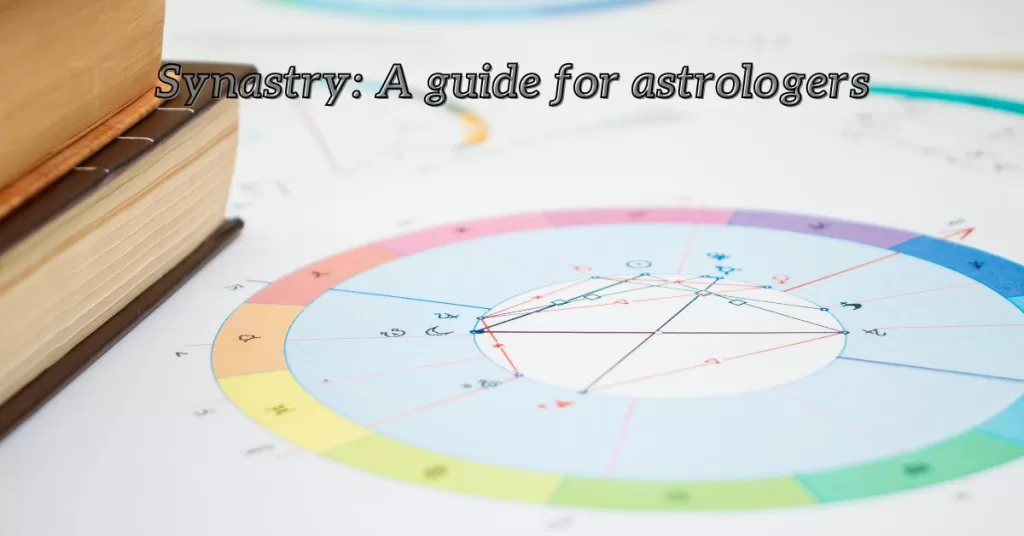Synastry is the art of relationship astrology. It is a fascinating and illuminating study of how individuals interact with one another. Synastry can reveal the strengths and challenges of any relationship, from romantic to professional, family or friendship.
What is Synastry?
Synastry is the comparison of two or more birth charts to analyze the compatibility and dynamics of a relationship. Synastry shows how the planets in one person’s chart affect the planets in another person’s chart, and vice versa. These interactions are called aspects, and they can be harmonious or challenging, depending on the angle between the planets.
Synastry can also show how the houses in one person’s chart relate to the houses in another person’s chart. The houses represent different areas of life, such as personality, career, family, romance, etc. By overlaying the charts, synastry can reveal which areas of life are activated or influenced by the relationship.
Synastry can also take into account other factors, such as the nodes of the moon, asteroids, fixed stars, midpoints, Arabic parts, etc. These can add more depth and detail to the analysis of a relationship.
How is Synastry Measured?
Synastry is measured by calculating the aspects between the planets in each person’s chart. Aspects are angles formed by two points in space, such as two planets or a planet and an angle (such as the ascendant or midheaven). There are different types of aspects, such as conjunctions (0 degrees), oppositions (180 degrees), trines (120 degrees), squares (90 degrees), sextiles (60 degrees), etc.
Each aspect has a different meaning and effect on the relationship. Generally speaking, conjunctions, trines and sextiles are considered harmonious aspects that create attraction, compatibility and ease. Oppositions, squares and quincunxes are considered challenging aspects that create tension, conflict and growth. However, each aspect has its own nuances and variations depending on the planets involved.
Synastry is also measured by comparing the houses in each person’s chart. The houses are divisions of the chart that correspond to different areas of life. Each house has a sign on its cusp (the beginning point) and may contain one or more planets. The sign on the cusp indicates the style or approach to that area of life, while the planets indicate the energy or activity in that area of life.
By overlaying the charts, synastry can show which house in one person’s chart falls into which house in another person’s chart. For example, if Person A’s first house (the house of self) falls into Person B’s seventh house (the house of partnership), it means that Person A’s identity and personality are strongly influenced by Person B’s relationship needs and expectations. Conversely, if Person B’s first house falls into Person A’s seventh house, it means that Person B’s identity and personality are strongly influenced by Person A’s relationship needs and expectations.
How to prepare for a synastry reading?
To prepare for a synastry reading, you will need the following information for both yourself and your partner:
- Date of birth
- Time of birth (if known)
- Place of birth
You can use online tools such as Synastry Chart Online Calculator or Free Synastry Chart to generate your synastry chart and see the aspects between your planets. However, it is advisable to consult a professional astrologer who can interpret the chart in more depth and provide guidance on how to improve your relationship.
What type of information can you expect from a synastry chart reading?
A synastry chart reading can provide you with various types of information about your relationship, such as:
- The level of attraction, compatibility, and chemistry between you and your partner
- The strengths and weaknesses of your relationship
- The areas of harmony and conflict in your relationship
- The potential challenges and opportunities for growth in your relationship
- The karmic lessons and destiny of your relationship
A synastry chart reading can also help you understand yourself and your partner better, as well as how you affect each other on different levels: physical, emotional, mental, and spiritual.
What are the differences between Western astrology approach to synastry and Indian compatibility astrology?
Western astrology approach to synastry is based on comparing the aspects between the planets in the birth charts of two people. It focuses on the individual personalities and preferences of each person, as well as how they relate to each other.
Indian compatibility astrology, also known as Vedic astrology or Jyotish, is based on comparing the lunar constellations or Nakshatras in the birth charts of two people. It focuses on the karmic compatibility and destiny of the relationship, as well as how it affects the family and society.
Indian compatibility astrology uses a system called Kuta or Ashtakoota, which assigns points or Gunas to various factors such as mental compatibility, sexual compatibility, health, longevity, prosperity, children, etc. The maximum score is 36 points, and a score of 18 or more is considered favorable for marriage. However, there are also exceptions and remedies for low scores or unfavorable factors.
Both Western astrology approach to synastry and Indian compatibility astrology have their own merits and limitations. They can complement each other by providing different perspectives and insights on a relationship. Ultimately, it is up to you to decide which approach resonates with you more and suits your needs better.

